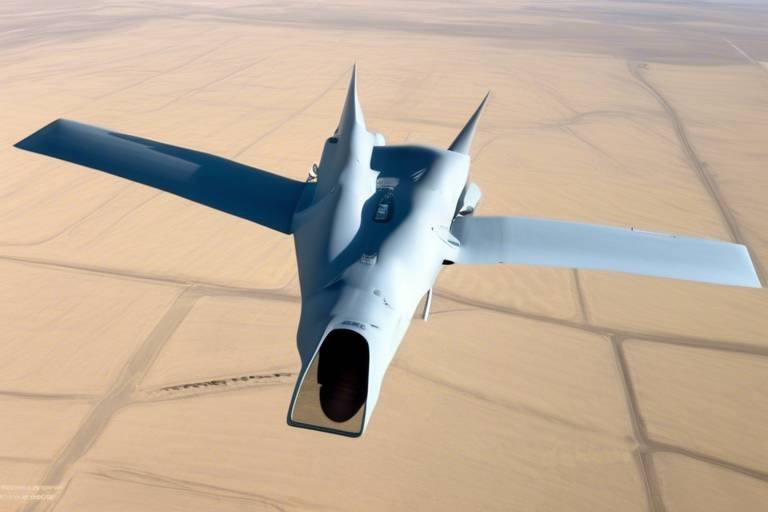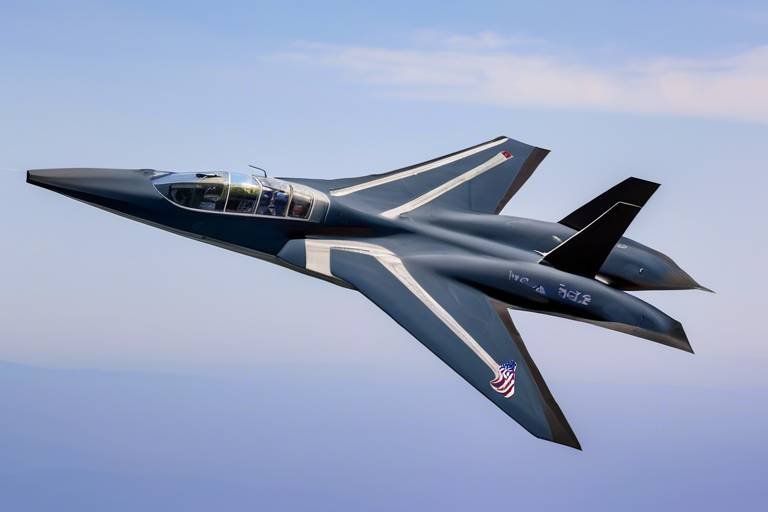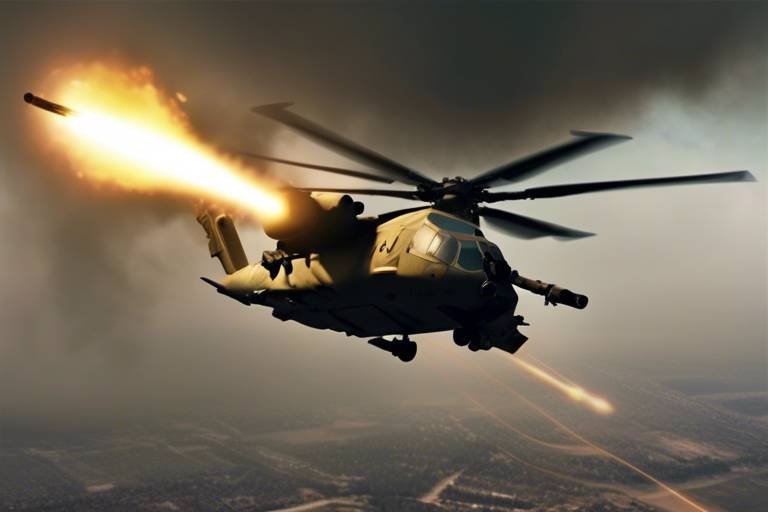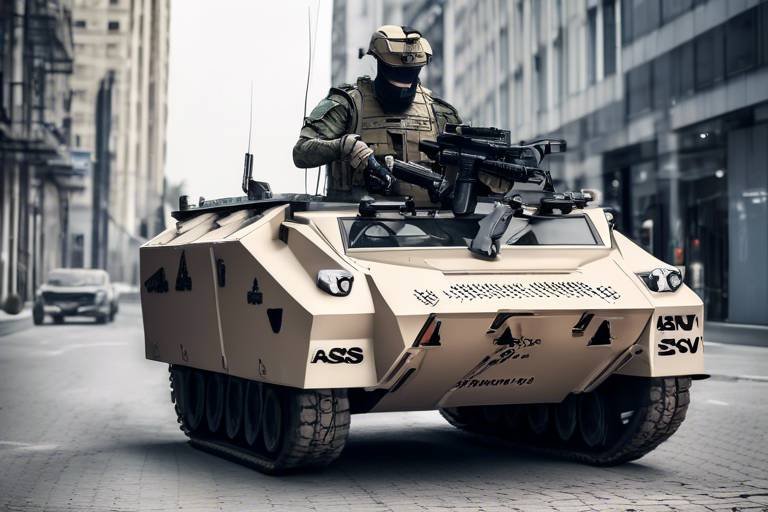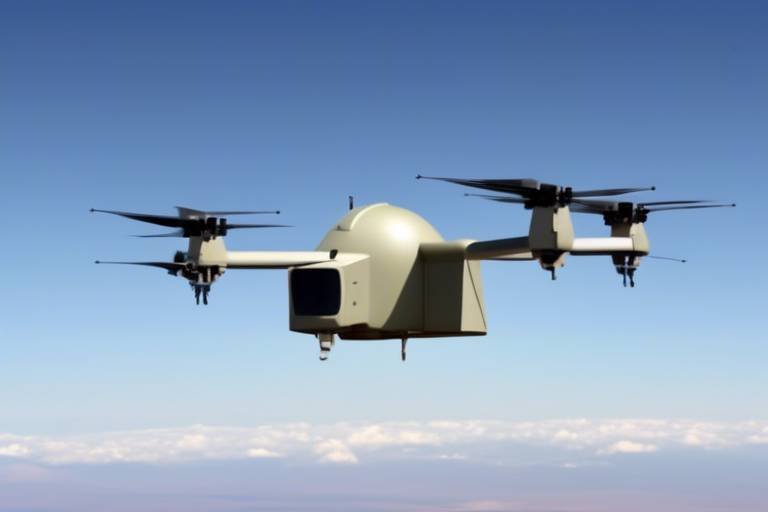The Impact of the RQ-11B Raven on Ground Operations
The RQ-11B Raven has emerged as a game-changer in the realm of military and civilian ground operations. Imagine a bird that never tires, soaring above the battlefield, capturing every detail with its keen eyes. This small, portable unmanned aerial vehicle (UAV) has redefined how ground forces approach reconnaissance and surveillance. By providing real-time intelligence, the Raven enhances situational awareness, allowing commanders to make informed decisions quickly. In an era where information is power, the Raven equips ground units with the tools they need to stay one step ahead of potential threats.
In military contexts, the stakes are incredibly high. The ability to gather crucial data without putting personnel at risk is invaluable. The Raven’s deployment can mean the difference between success and failure in operations. It acts as the eyes and ears of ground forces, surveying areas that might be too dangerous for troops to enter. This capability not only saves lives but also allows for more effective planning and execution of missions. In civilian applications, such as disaster response or search and rescue operations, the Raven can quickly assess situations, providing crucial information that can aid in life-saving efforts.
What makes the RQ-11B Raven truly remarkable is its combination of advanced technology and operational flexibility. Equipped with high-resolution cameras and thermal imaging systems, it can operate effectively in various environments and conditions. This adaptability is crucial in today's dynamic operational landscapes, where threats can arise unexpectedly. The Raven can seamlessly transition from day to night operations, ensuring that ground units maintain continuity in their surveillance efforts. This capability is akin to having a trusty flashlight that never dims, illuminating the path ahead even in the darkest hours.
Furthermore, the real-time data transmission capabilities of the Raven transform how ground commanders strategize and respond to threats. Imagine being able to see and assess a situation as it unfolds, rather than relying on delayed reports. This instant access to information allows for rapid decision-making, which is essential in high-stakes environments. The integration of the RQ-11B into ground operations not only enhances situational awareness but also significantly improves mission success rates, making it an indispensable asset in modern warfare.
- What is the RQ-11B Raven? - The RQ-11B Raven is a small, portable unmanned aerial vehicle designed for tactical reconnaissance.
- How does the Raven enhance ground operations? - It provides real-time intelligence, improving situational awareness and decision-making for ground forces.
- What are the main challenges faced by the RQ-11B? - The Raven faces limitations such as flight duration constraints and sensitivity to adverse weather conditions.
- What future developments can we expect for the RQ-11B? - Future iterations may include enhanced features, advanced autonomy, and integration with other systems.

Overview of the RQ-11B Raven
This article explores how the RQ-11B Raven drone has transformed ground operations in military and civilian contexts, enhancing reconnaissance, surveillance, and tactical decision-making capabilities.
The RQ-11B Raven is not just another drone; it's a game changer in the realm of tactical reconnaissance. Designed for portability and ease of use, this small unmanned aerial vehicle (UAV) has become a vital asset for military and civilian operations alike. Imagine having a bird's-eye view of the battlefield, providing real-time intelligence that can make or break a mission. That's precisely what the Raven delivers.
Weighing in at less than 5 pounds, the RQ-11B can be easily transported by ground troops, allowing for quick deployment in various operational scenarios. Its lightweight design doesn't compromise its capabilities; equipped with cutting-edge technology, it provides unparalleled situational awareness. In a world where information is power, the Raven arms ground forces with the timely data they need to make informed decisions.
One of the most impressive features of the RQ-11B Raven is its ability to operate in diverse environments. Whether it's a dense urban landscape or a rugged mountainous terrain, this UAV is built to adapt. With a wingspan of about 4.5 feet, it can soar to altitudes of up to 15,000 feet, ensuring it can cover a vast area while remaining inconspicuous. The Raven is also designed for quick launch and recovery, enabling it to be deployed in a matter of minutes, which is crucial in fast-paced situations.
Furthermore, the RQ-11B Raven is equipped with advanced sensors that provide critical data for ground forces. The integration of high-resolution cameras and thermal imaging technology allows operators to monitor activities in real-time. This capability is essential for target identification, surveillance, and reconnaissance missions. Imagine having the ability to see through the darkness or smoke of battle—this drone makes that possible!
In summary, the RQ-11B Raven is a small yet powerful tool that enhances operational effectiveness on the ground. Its portability, advanced technology, and adaptability make it an indispensable asset for modern military operations. As we delve deeper into its technological advancements, you'll see just how this drone is reshaping the landscape of ground operations.
The RQ-11B features advanced sensors, communication systems, and flight capabilities, enabling it to operate effectively in diverse environments and enhance the operational effectiveness of ground units.
Equipped with high-resolution cameras and thermal imaging, the Raven provides critical data for target identification and monitoring, significantly improving ground forces' ability to assess threats in real-time.
The Raven's ability to fly during both day and night enhances its utility, allowing ground units to maintain operational continuity and gather intelligence regardless of lighting conditions.
Real-time data transmission allows ground commanders to make informed decisions quickly, facilitating rapid responses to emerging threats and improving overall mission success rates.
The integration of the RQ-11B into ground operations offers numerous advantages, including increased situational awareness, reduced risk to personnel, and enhanced mission planning and execution.
Despite its many advantages, the RQ-11B faces challenges such as limited flight time, susceptibility to adverse weather conditions, and the need for skilled operators to maximize its potential.
The Raven's operational range is limited by its battery life, which can restrict mission scope and necessitate careful planning to ensure adequate coverage of operational areas.
Adverse weather conditions can impact the Raven's performance, limiting its effectiveness in certain environments and requiring ground forces to adapt their strategies accordingly.
As technology evolves, future iterations of the RQ-11B Raven are expected to incorporate enhanced features, improving its capabilities and further solidifying its role in modern ground operations.
Future developments may focus on integrating the Raven with other unmanned systems and technologies, creating a more comprehensive surveillance and reconnaissance network for ground forces.
Improvements in autonomous flight capabilities could enable the RQ-11B to operate with greater independence, allowing it to perform complex missions without constant human oversight.
- What is the RQ-11B Raven?
The RQ-11B Raven is a small, portable UAV designed for tactical reconnaissance and surveillance, providing real-time intelligence to ground forces.
- How does the RQ-11B enhance situational awareness?
It offers high-resolution imaging and thermal capabilities, allowing operators to monitor activities and assess threats in real-time.
- What are the limitations of the RQ-11B?
Its limitations include battery life, susceptibility to adverse weather, and the need for skilled operators.
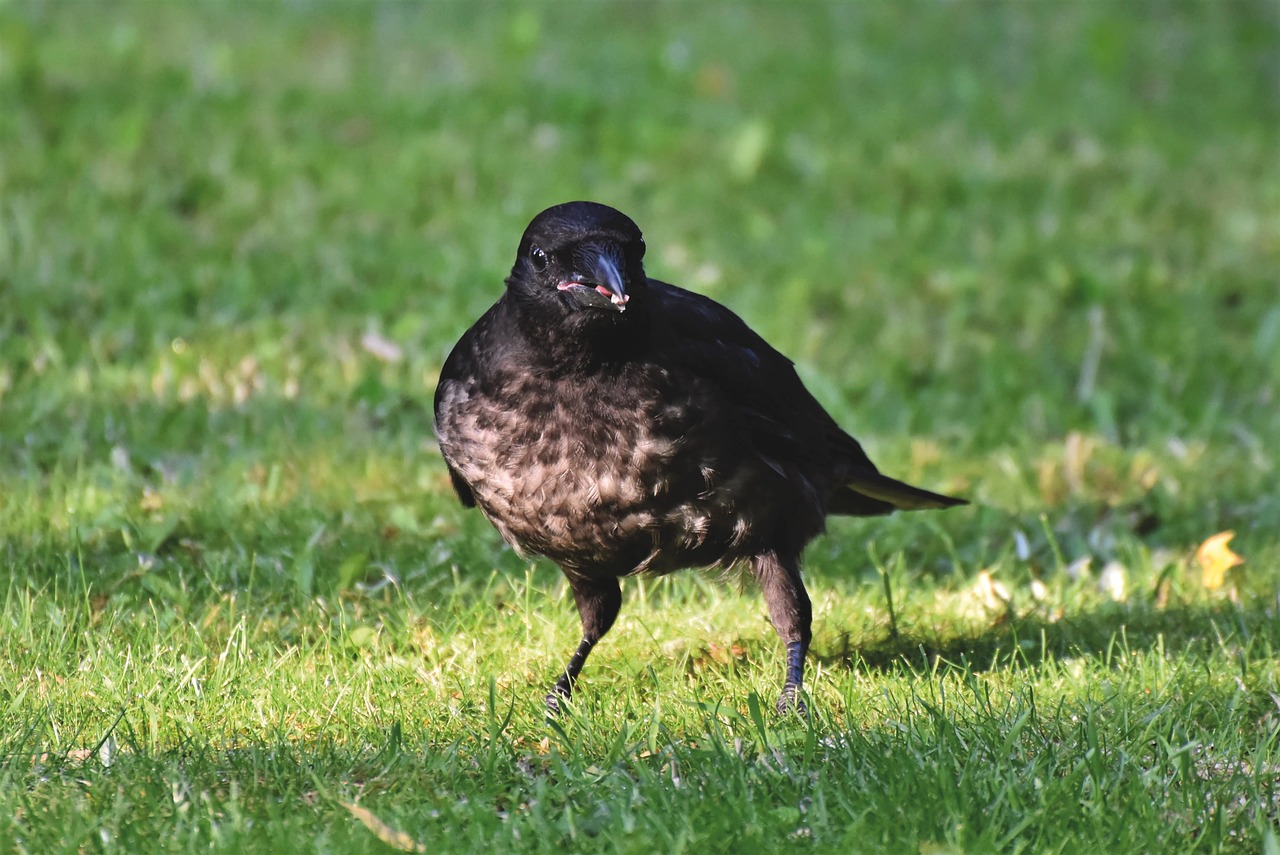
Technological Advancements in the RQ-11B Raven
This article explores how the RQ-11B Raven drone has transformed ground operations in military and civilian contexts, enhancing reconnaissance, surveillance, and tactical decision-making capabilities.
The RQ-11B Raven is a small, portable unmanned aerial vehicle designed for tactical reconnaissance, providing real-time intelligence to ground forces and improving situational awareness on the battlefield.
The RQ-11B Raven is not just a drone; it’s a game-changer in the realm of aerial reconnaissance. With cutting-edge technology integrated into its design, it offers capabilities that were once reserved for larger, more complex systems. The advancements in this small UAV (Unmanned Aerial Vehicle) are pivotal in enhancing the effectiveness of ground operations. Imagine having a bird’s-eye view of the battlefield, all while staying out of harm’s way. That’s precisely what the Raven brings to the table.
One of the most significant technological advancements in the RQ-11B Raven is its sensor capabilities. The Raven is equipped with high-resolution cameras and thermal imaging systems that allow it to capture detailed images and videos even in low-light conditions. This means that ground forces can identify and monitor potential threats with incredible precision. The data gathered is not just for show; it plays a crucial role in making tactical decisions. For instance, during a mission, if a unit encounters an unexpected enemy position, the Raven can quickly relay real-time visuals back to the command center, enabling swift and informed responses.
Imagine trying to spot a needle in a haystack; that’s what ground forces often face when assessing threats in complex environments. However, with the Raven’s advanced sensors, this task becomes significantly easier. The drone's high-resolution cameras provide clarity that can reveal enemy positions, troop movements, and even the types of equipment being used. Additionally, the thermal imaging allows for detection of heat signatures, which is invaluable during night operations or in obscured visibility conditions.
The Raven’s ability to operate both during the day and at night is a huge advantage. This dual capability ensures that ground units can maintain operational continuity, gathering intelligence regardless of the time of day. Picture this: while the sun sets and darkness envelops the battlefield, the Raven is still soaring above, its sensors working tirelessly to provide critical data. This seamless transition between day and night operations not only enhances intelligence gathering but also boosts confidence among ground troops, knowing they have reliable support in any condition.
Another remarkable feature of the RQ-11B Raven is its real-time data transmission capability. Imagine being able to send and receive crucial information instantaneously. This feature allows ground commanders to make informed decisions quickly, facilitating rapid responses to emerging threats. The data collected by the Raven can be analyzed on-the-fly, meaning that adjustments to strategies can be made in real-time, significantly improving mission success rates. This capability is akin to having a tactical advisor that’s always one step ahead, providing insights that can turn the tide of an operation.
The integration of the RQ-11B into ground operations offers numerous advantages, including increased situational awareness, reduced risk to personnel, and enhanced mission planning and execution.
Despite its many advantages, the RQ-11B faces challenges such as limited flight time, susceptibility to adverse weather conditions, and the need for skilled operators to maximize its potential.
The Raven's operational range is limited by its battery life, which can restrict mission scope and necessitate careful planning to ensure adequate coverage of operational areas.
Adverse weather conditions can impact the Raven's performance, limiting its effectiveness in certain environments and requiring ground forces to adapt their strategies accordingly.
As technology evolves, future iterations of the RQ-11B Raven are expected to incorporate enhanced features, improving its capabilities and further solidifying its role in modern ground operations.
Future developments may focus on integrating the Raven with other unmanned systems and technologies, creating a more comprehensive surveillance and reconnaissance network for ground forces.
Improvements in autonomous flight capabilities could enable the RQ-11B to operate with greater independence, allowing it to perform complex missions without constant human oversight.
- What is the RQ-11B Raven?
The RQ-11B Raven is a small, portable UAV designed for tactical reconnaissance and intelligence gathering. - How does the Raven enhance ground operations?
It provides real-time intelligence, improving situational awareness and decision-making for ground forces. - What are the main technological advancements in the Raven?
Key advancements include high-resolution cameras, thermal imaging, and real-time data transmission capabilities. - Can the Raven operate at night?
Yes, it is equipped to perform both day and night operations, enhancing its utility on the battlefield. - What are the limitations of the RQ-11B Raven?
Limitations include flight duration constraints, weather sensitivity, and the requirement for skilled operators.
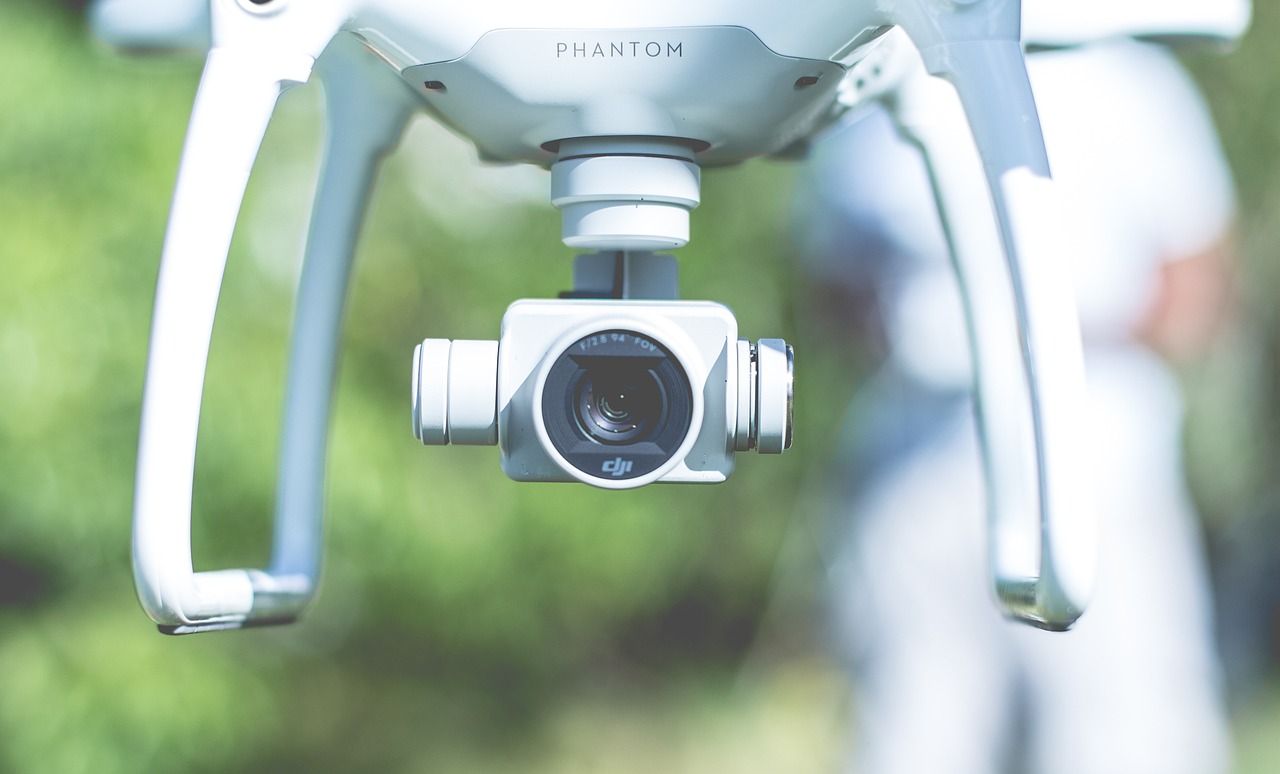
Sensor Capabilities
The RQ-11B Raven is not just any drone; it’s a game changer on the battlefield, primarily due to its advanced . Imagine having a bird's eye view of the terrain, with the ability to see through darkness and even bad weather. That's precisely what the Raven offers. It’s equipped with high-resolution cameras that capture stunningly clear images, allowing ground forces to identify targets from a safe distance. This capability is akin to having a pair of superhuman eyes that can pierce through fog and smoke, giving operators a significant tactical advantage.
One of the standout features of the Raven is its thermal imaging capability. This technology enables the drone to detect heat signatures from personnel, vehicles, and other equipment, even in complete darkness. Think about it: while traditional reconnaissance methods may falter when the sun sets, the Raven soars above, illuminating the battlefield with its thermal vision. This is crucial for night operations where visibility is limited, ensuring that ground units can maintain operational effectiveness around the clock.
Furthermore, the Raven’s sensors are not just about capturing images; they also facilitate real-time data analysis. As the drone flies, it transmits information back to ground control, allowing commanders to make informed decisions on the fly. This immediate feedback loop can be the difference between success and failure in a high-stakes environment. For instance, if a unit encounters unexpected enemy movements, the Raven can quickly relay this information, enabling rapid tactical adjustments.
To give you a clearer picture, here’s a table summarizing the sensor capabilities of the RQ-11B Raven:
| Sensor Type | Functionality | Operational Advantage |
|---|---|---|
| High-Resolution Camera | Captures detailed imagery of the terrain and targets | Enhanced target identification and situational awareness |
| Thermal Imaging | Detects heat signatures | Effective for night operations and low-visibility conditions |
| Real-Time Data Transmission | Provides immediate feedback to ground forces | Facilitates quick decision-making and tactical adjustments |
In summary, the of the RQ-11B Raven are not just impressive; they are essential for modern military operations. They enhance the ability of ground forces to operate effectively and safely, providing a level of situational awareness that was previously unimaginable. With these tools at their disposal, commanders can navigate the complexities of the battlefield with confidence, knowing they have the eyes of the Raven watching over them.
- What is the primary function of the RQ-11B Raven?
The primary function of the RQ-11B Raven is tactical reconnaissance, providing real-time intelligence to ground forces.
- Can the Raven operate at night?
Yes, the Raven is equipped with thermal imaging capabilities that allow it to operate effectively in low-light conditions.
- How does the Raven transmit data?
The Raven transmits data in real-time to ground control, allowing for immediate analysis and decision-making.
- What are the limitations of the RQ-11B Raven?
Some limitations include its flight duration, which is affected by battery life, and its performance in adverse weather conditions.
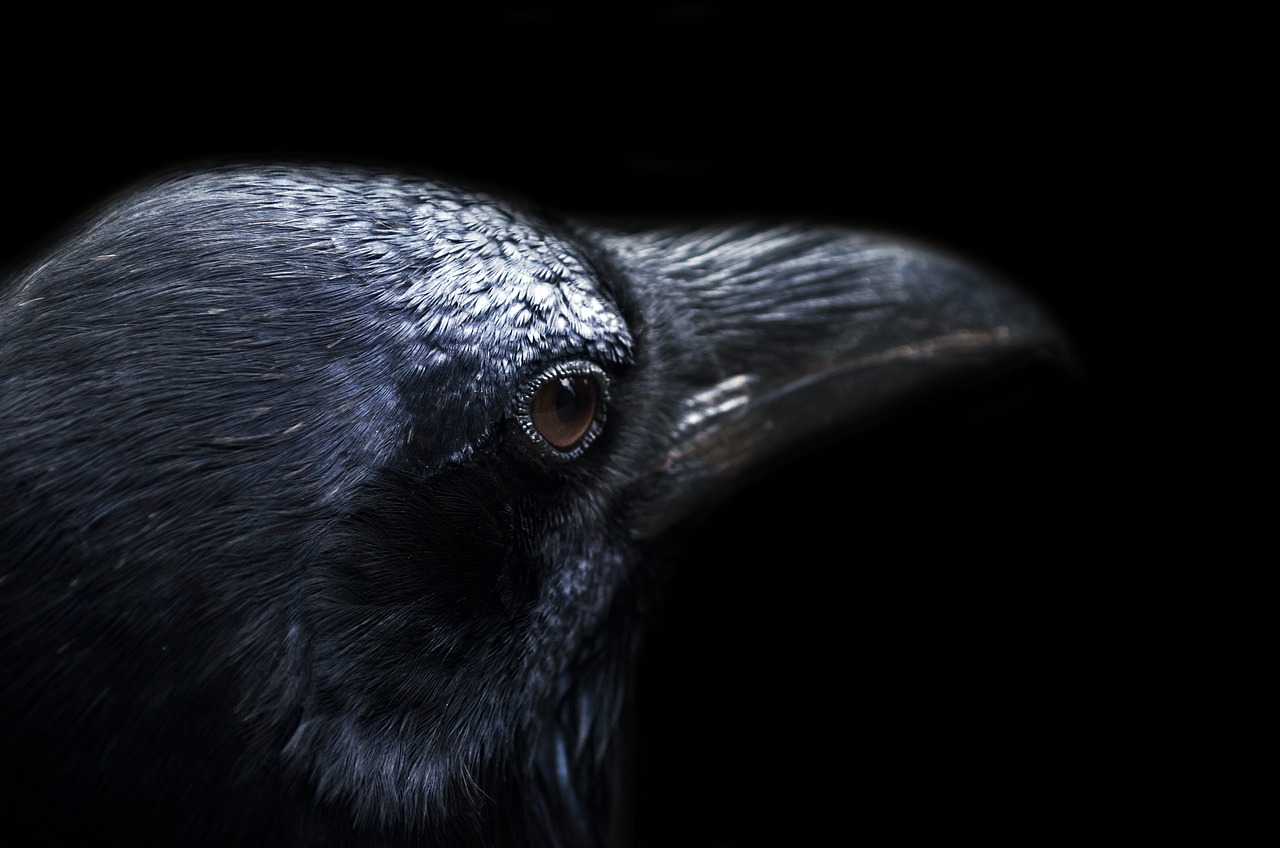
Day and Night Operations
The RQ-11B Raven is a game-changer when it comes to tactical operations, especially because of its ability to conduct missions both during the day and at night. Imagine being able to keep an eye on the battlefield no matter the time of day; that’s the kind of edge the Raven provides to ground forces. This versatility is crucial in military operations where the element of surprise can mean the difference between success and failure.
During daytime, the Raven’s high-resolution cameras capture stunningly clear images, allowing operators to identify potential threats and gather essential intelligence. However, when the sun sets and darkness envelops the area, the Raven doesn’t just sit idle. It seamlessly transitions to its thermal imaging capabilities, which allow it to detect heat signatures, making it invaluable for night reconnaissance missions. This dual capability ensures that ground units maintain operational continuity, providing them with a comprehensive view of the battlefield at all times.
Moreover, the ability to operate in both light and dark conditions means that ground forces can plan missions with greater flexibility. They no longer have to wait for daylight to gather intelligence or monitor movements. Instead, they can launch the Raven at any time, maximizing their operational window. This is particularly useful in dynamic environments where conditions can change rapidly, and timely information is vital.
To illustrate the impact of day and night operations with the RQ-11B Raven, consider the following table that compares its capabilities in different lighting conditions:
| Condition | Capabilities | Operational Benefits |
|---|---|---|
| Daytime | High-resolution imaging | Clear target identification and intelligence gathering |
| Nighttime | Thermal imaging | Detection of heat signatures, enhancing surveillance |
In essence, the RQ-11B Raven’s ability to operate effectively in both day and night settings not only enhances its utility but also significantly improves the tactical decision-making capabilities of ground forces. This means that they can respond to threats more rapidly and effectively, leading to better mission outcomes. The incorporation of this technology into military operations has truly transformed how reconnaissance and surveillance are conducted, providing a level of situational awareness that was previously unimaginable.
- What is the RQ-11B Raven used for? The RQ-11B Raven is primarily used for tactical reconnaissance, providing real-time intelligence to ground forces.
- Can the Raven operate in adverse weather conditions? The Raven is designed for various environments, but adverse weather can affect its performance.
- How long can the RQ-11B Raven fly? The flight duration is limited by battery life, typically ranging around 60-90 minutes depending on conditions.
- What kind of sensors does the Raven have? The Raven is equipped with high-resolution cameras and thermal imaging sensors for day and night operations.
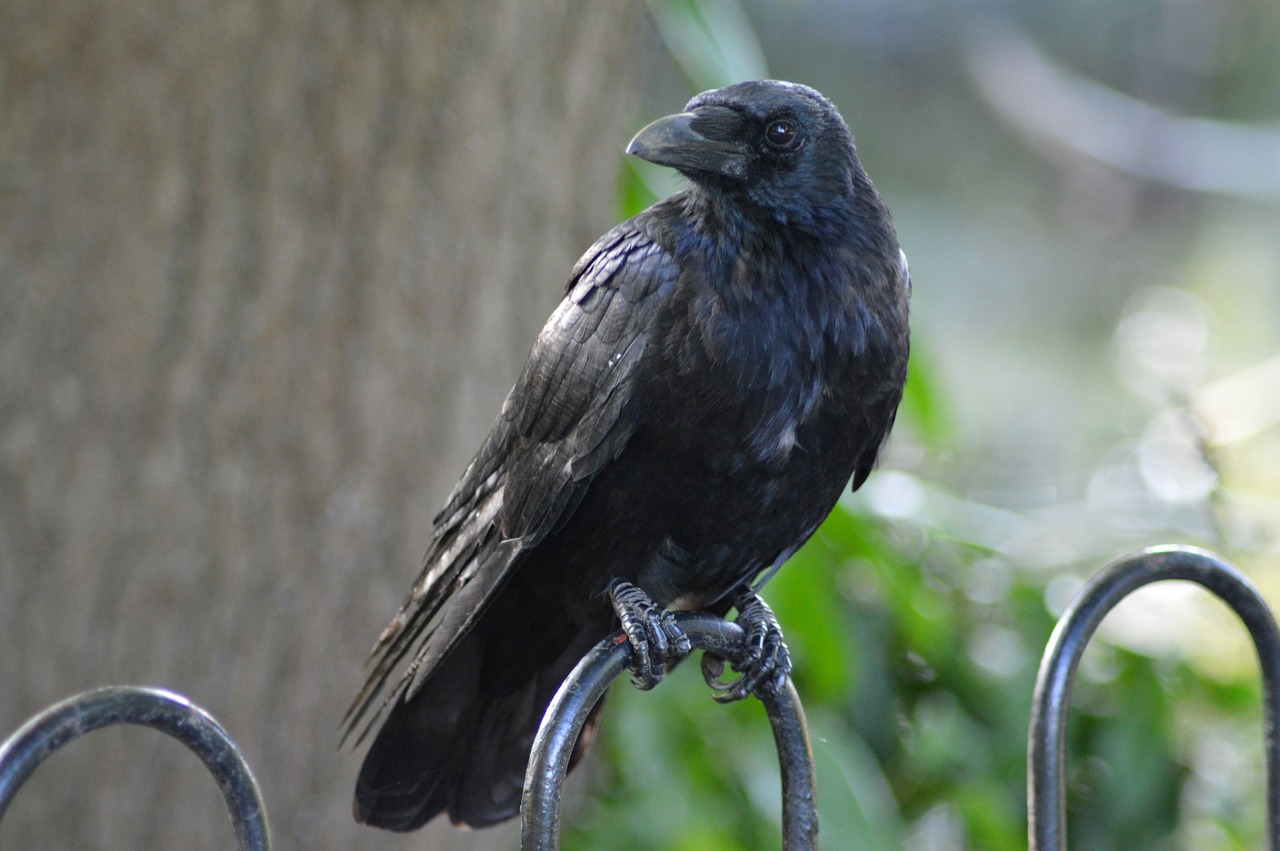
Data Transmission and Analysis
The RQ-11B Raven is not just a flying camera; it’s a vital tool that bridges the gap between observation and action. One of its standout features is its real-time data transmission. Imagine being on the battlefield, and instead of waiting for intel to be relayed through multiple channels, you receive critical information instantaneously. This capability allows ground commanders to make informed decisions quickly, which is essential when every second counts. The Raven streams live video feeds and sensor data directly to the operators, enabling them to assess situations as they unfold.
But how does this data transmission work? The Raven utilizes advanced communication systems that ensure a reliable connection, even in challenging environments. These systems can transmit high-definition video and thermal imagery, which are crucial for identifying potential threats or monitoring enemy movements. The data can be analyzed on-the-fly, allowing military personnel to adjust their strategies promptly. This level of situational awareness transforms how ground forces operate, making them more agile and responsive.
Moreover, the integration of data analysis tools enhances the utility of the information received. Operators can use software to interpret the data, providing insights that might not be immediately obvious. For instance, patterns in movement detected through thermal imaging can indicate enemy activity, allowing for preemptive actions rather than reactive measures. This proactive approach significantly increases mission success rates.
In addition to military applications, the data transmission capabilities of the Raven can also be beneficial in civilian contexts, such as disaster response or search and rescue operations. Quick access to aerial views and real-time updates can make a world of difference in coordinating efforts and saving lives. The versatility of the Raven ensures that its impact is felt across various sectors, demonstrating that the future of reconnaissance is not just about gathering information, but also about how swiftly and effectively that information can be analyzed and acted upon.
In summary, the RQ-11B Raven's data transmission and analysis capabilities are game-changers. They not only enhance the situational awareness of ground forces but also empower them to make rapid, informed decisions that can alter the course of operations. As technology continues to evolve, one can only imagine the new heights this drone will reach in terms of data processing and operational efficiency.
- What is the RQ-11B Raven?
The RQ-11B Raven is a small, portable unmanned aerial vehicle designed for tactical reconnaissance, providing real-time intelligence to ground forces. - How does the Raven transmit data?
The Raven uses advanced communication systems to stream live video feeds and sensor data directly to operators, ensuring reliable connectivity even in challenging environments. - Can the Raven operate in adverse weather conditions?
While the Raven is designed for various environments, adverse weather can impact its performance, necessitating careful operational planning. - What are the future developments expected for the Raven?
Future iterations may include enhanced features such as advanced autonomy and integration with other unmanned systems for a comprehensive surveillance network.
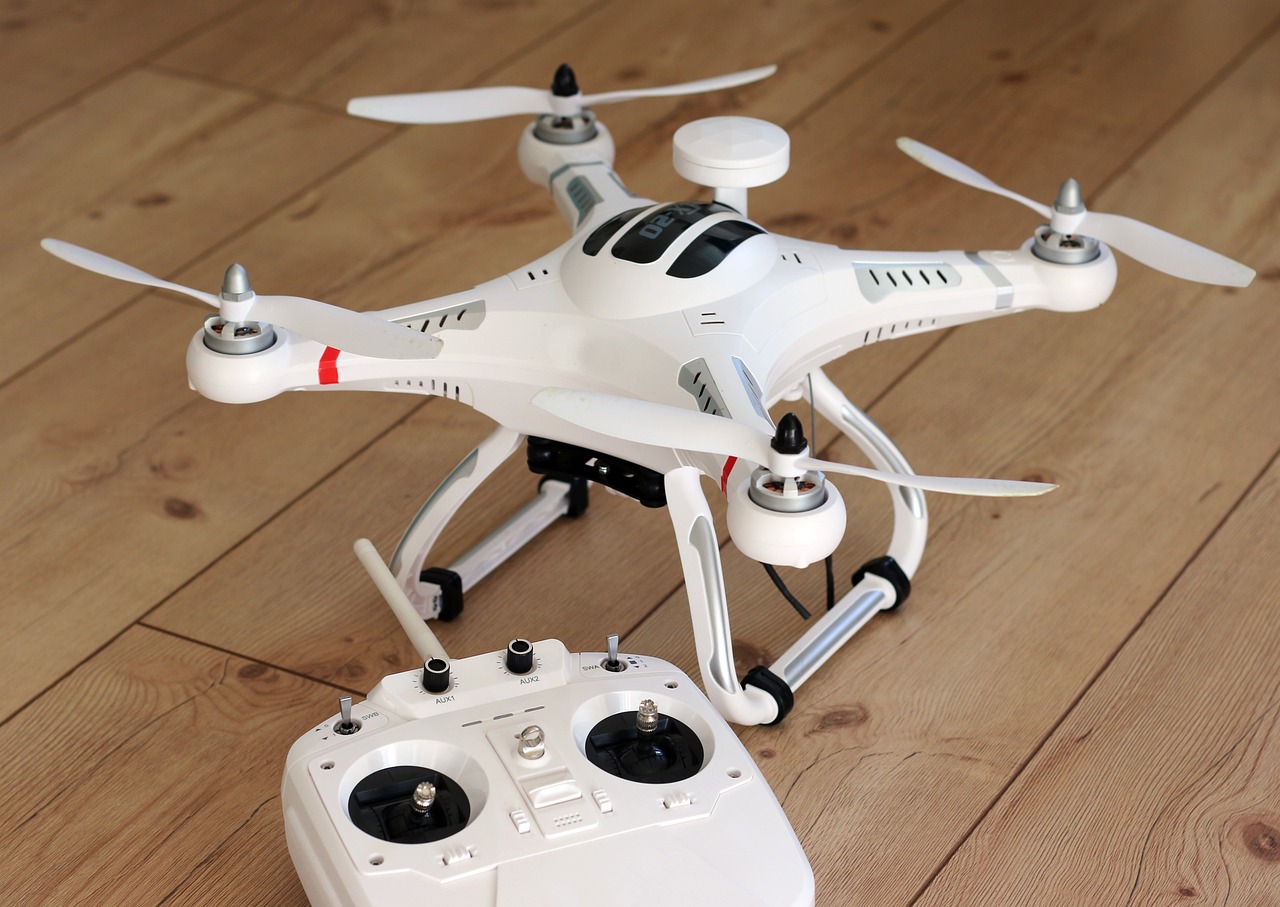
Operational Benefits for Ground Forces
This article explores how the RQ-11B Raven drone has transformed ground operations in military and civilian contexts, enhancing reconnaissance, surveillance, and tactical decision-making capabilities.
The RQ-11B Raven is a small, portable unmanned aerial vehicle designed for tactical reconnaissance, providing real-time intelligence to ground forces and improving situational awareness on the battlefield.
The RQ-11B features advanced sensors, communication systems, and flight capabilities, enabling it to operate effectively in diverse environments and enhance the operational effectiveness of ground units.
Equipped with high-resolution cameras and thermal imaging, the Raven provides critical data for target identification and monitoring, significantly improving ground forces' ability to assess threats in real-time.
The Raven's ability to fly during both day and night enhances its utility, allowing ground units to maintain operational continuity and gather intelligence regardless of lighting conditions.
Real-time data transmission allows ground commanders to make informed decisions quickly, facilitating rapid responses to emerging threats and improving overall mission success rates.
The integration of the RQ-11B Raven into ground operations offers numerous advantages that fundamentally change how military and civilian units conduct their missions. One of the most significant benefits is the increased situational awareness. Imagine being able to see what’s happening miles away without putting anyone in harm's way. The Raven's ability to provide real-time video feeds and intelligence allows commanders to have a comprehensive view of the battlefield, making them feel like they have eyes in the sky. This enhanced awareness not only helps in identifying potential threats but also aids in understanding the operational environment better.
Moreover, the RQ-11B reduces the risk to personnel. In traditional reconnaissance missions, ground troops often had to venture into dangerous areas, exposing them to enemy fire or ambushes. With the Raven flying overhead, soldiers can gather intelligence without stepping into the line of fire. This shift not only protects lives but also boosts morale among troops who can trust that they have an advanced tool supporting them.
Another crucial operational benefit is the enhanced mission planning and execution. The RQ-11B allows for more informed decision-making. Commanders can assess the terrain, identify enemy positions, and plan their strategies with a level of detail that was previously unattainable. This capability is akin to having a tactical map that updates in real-time, giving ground forces a significant edge in planning their next move.
Additionally, the drone's ability to operate in various environments adds to its versatility. Whether it’s a dense urban area or an open battlefield, the Raven can adapt and provide vital information. This adaptability means that ground forces can deploy the Raven in numerous scenarios, making it an invaluable asset in both military and humanitarian missions.
In summary, the operational benefits of the RQ-11B Raven extend beyond mere technological advancements; they fundamentally enhance the effectiveness and safety of ground operations. By improving situational awareness, reducing risks, and aiding in meticulous mission planning, the Raven stands out as a game-changer on the modern battlefield.
Despite its many advantages, the RQ-11B faces challenges such as limited flight time, susceptibility to adverse weather conditions, and the need for skilled operators to maximize its potential.
The Raven's operational range is limited by its battery life, which can restrict mission scope and necessitate careful planning to ensure adequate coverage of operational areas.
Adverse weather conditions can impact the Raven's performance, limiting its effectiveness in certain environments and requiring ground forces to adapt their strategies accordingly.
As technology evolves, future iterations of the RQ-11B Raven are expected to incorporate enhanced features, improving its capabilities and further solidifying its role in modern ground operations.
Future developments may focus on integrating the Raven with other unmanned systems and technologies, creating a more comprehensive surveillance and reconnaissance network for ground forces.
Improvements in autonomous flight capabilities could enable the RQ-11B to operate with greater independence, allowing it to perform complex missions without constant human oversight.
- What is the RQ-11B Raven? The RQ-11B Raven is a small, portable unmanned aerial vehicle designed for tactical reconnaissance.
- How does the Raven improve situational awareness? It provides real-time video feeds and intelligence, allowing commanders to see the battlefield from above.
- What are the limitations of the RQ-11B? Its flight duration is limited by battery life, and it can be affected by adverse weather conditions.
- What future developments are expected for the Raven? Future iterations are expected to have enhanced features, including better autonomy and integration with other systems.
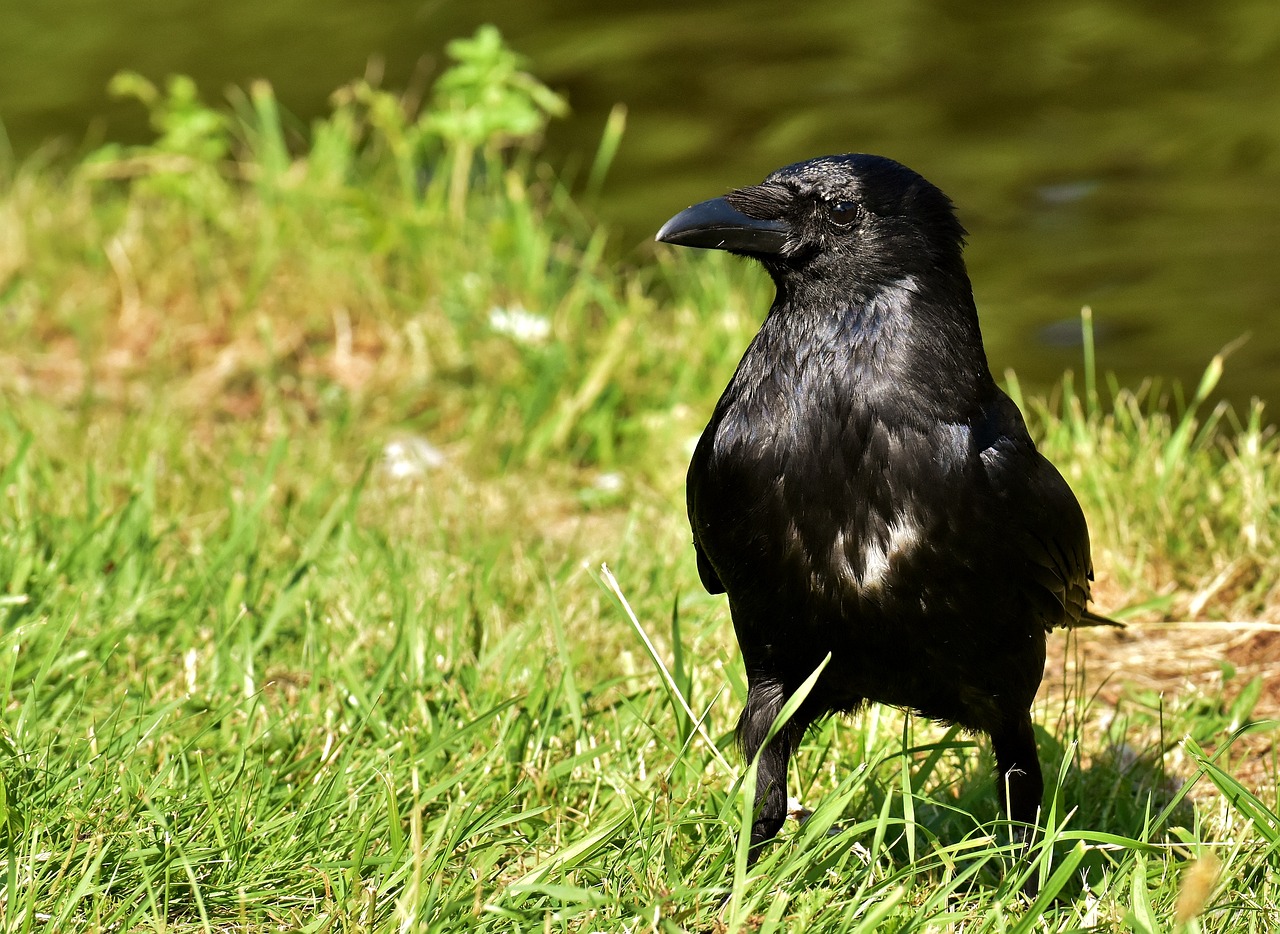
Challenges and Limitations of the RQ-11B Raven
While the RQ-11B Raven drone has undoubtedly revolutionized ground operations, it is not without its challenges and limitations. Understanding these hurdles is crucial for military personnel and decision-makers who rely on this technology. One of the most pressing issues is the limited flight time. The Raven's operational range is significantly constrained by its battery life, which typically lasts around 60 to 90 minutes. This limitation can restrict the scope of missions, forcing operators to plan meticulously to ensure that all critical areas are covered within that narrow window. Imagine trying to capture a wide-angle shot of a breathtaking landscape, but your camera's battery dies just as you get the perfect angle; that's the kind of frustration operators may face with the Raven.
Another challenge lies in the weather sensitivity of the RQ-11B. While it is designed to withstand various environmental conditions, adverse weather—such as heavy rain, strong winds, or snow—can severely impact its performance. In such situations, ground forces may need to adapt their strategies, which can lead to delays in intelligence gathering. For instance, if a mission is planned for a day with unpredictable weather, operators might have to make quick decisions about whether to deploy the Raven or wait for better conditions. This unpredictability can create complications in high-stakes scenarios where timing is everything.
Additionally, the RQ-11B requires skilled operators to maximize its potential. While the drone is user-friendly, it still demands a certain level of training and expertise. Operators must be well-versed in interpreting the data collected and making rapid decisions based on that information. This need for skilled personnel can create bottlenecks, especially in large operations where multiple drones may be deployed simultaneously. It's like having a high-performance sports car; if you don't know how to drive it properly, you won't be able to unleash its full potential.
In summary, while the RQ-11B Raven offers significant advantages for ground operations, its limitations—such as flight duration constraints, weather sensitivity, and the requirement for skilled operators—must be carefully considered. Addressing these challenges is essential for maximizing the effectiveness of this remarkable drone in the field.
- What is the typical flight time of the RQ-11B Raven? The typical flight time is around 60 to 90 minutes, depending on operational conditions.
- Can the RQ-11B operate in adverse weather conditions? While it can handle some weather, heavy rain, strong winds, or snow can significantly affect its performance.
- What skills are necessary to operate the RQ-11B Raven effectively? Operators need training in data interpretation and quick decision-making to utilize the drone's capabilities fully.
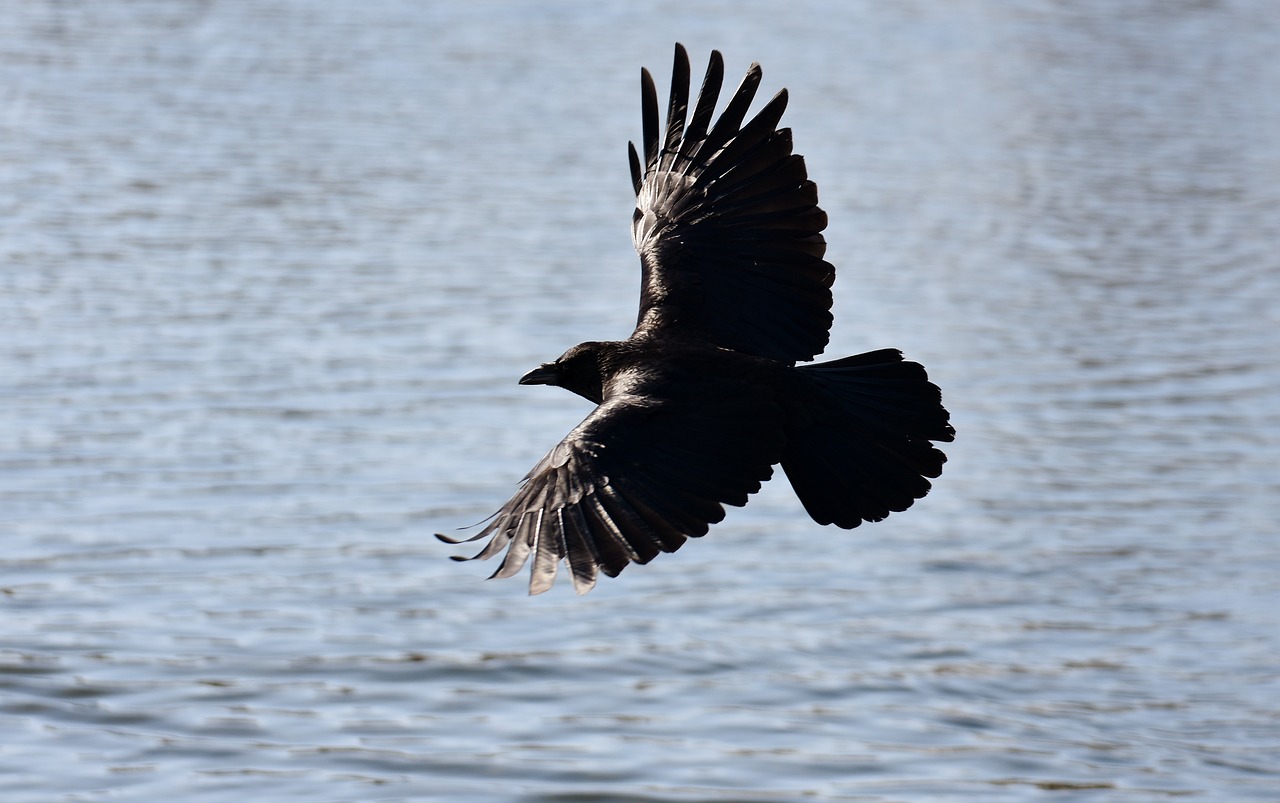
Flight Duration Constraints
The RQ-11B Raven, while being a marvel of modern technology, does face certain that can impact its operational effectiveness. With a maximum flight time of approximately 90 minutes, the Raven's battery life is a crucial factor that limits how long it can stay airborne during a mission. This constraint can pose significant challenges in dynamic battlefield environments where every second counts. Imagine a scenario where ground forces need continuous aerial support; the Raven’s limited duration could necessitate a rotation of drones or even lead to gaps in surveillance coverage.
To put this into perspective, consider the operational range of the Raven. For example, if a unit is tasked with monitoring a vast area, the limited flight time means that careful planning is essential. Ground commanders must strategically allocate missions to ensure that the drone can cover the necessary ground without exceeding its battery limits. This often involves creating a schedule that allows for timely retrieval and recharging, which can be a logistical challenge in the heat of an operation.
Moreover, the need for frequent landings and takeoffs can increase the risk of exposure to enemy fire, particularly in hostile areas. The Raven's flight duration constraints lead to a reliance on tactical planning, where the timing of drone deployments must be meticulously coordinated with ground operations. In some cases, this can mean the difference between successful reconnaissance and missed opportunities for intelligence gathering.
While the RQ-11B Raven is equipped with advanced technology to enhance its functionality, its flight duration remains a significant limitation. Ground forces are continually adapting their strategies to work within these constraints, often employing a mix of aerial assets to maintain a robust surveillance capability. By integrating other unmanned systems or manned aircraft into their operations, military units can mitigate the limitations posed by the Raven's flight time, ensuring that they can maintain a constant watch over critical areas.
In conclusion, understanding the of the RQ-11B Raven is vital for optimizing its use in ground operations. As technology advances, there is hope that future iterations may offer longer flight times, thereby enhancing the operational flexibility of this remarkable drone.
- What is the maximum flight time of the RQ-11B Raven? The maximum flight time is approximately 90 minutes.
- How does the flight duration affect military operations? Limited flight duration can lead to gaps in surveillance and requires careful planning for mission coverage.
- Are there strategies to mitigate the flight duration limitations? Yes, integrating other unmanned systems and scheduling drone rotations can help maintain continuous surveillance.
- Can the Raven operate in adverse weather conditions? While it can operate in various conditions, severe weather can impact its performance and flight duration.
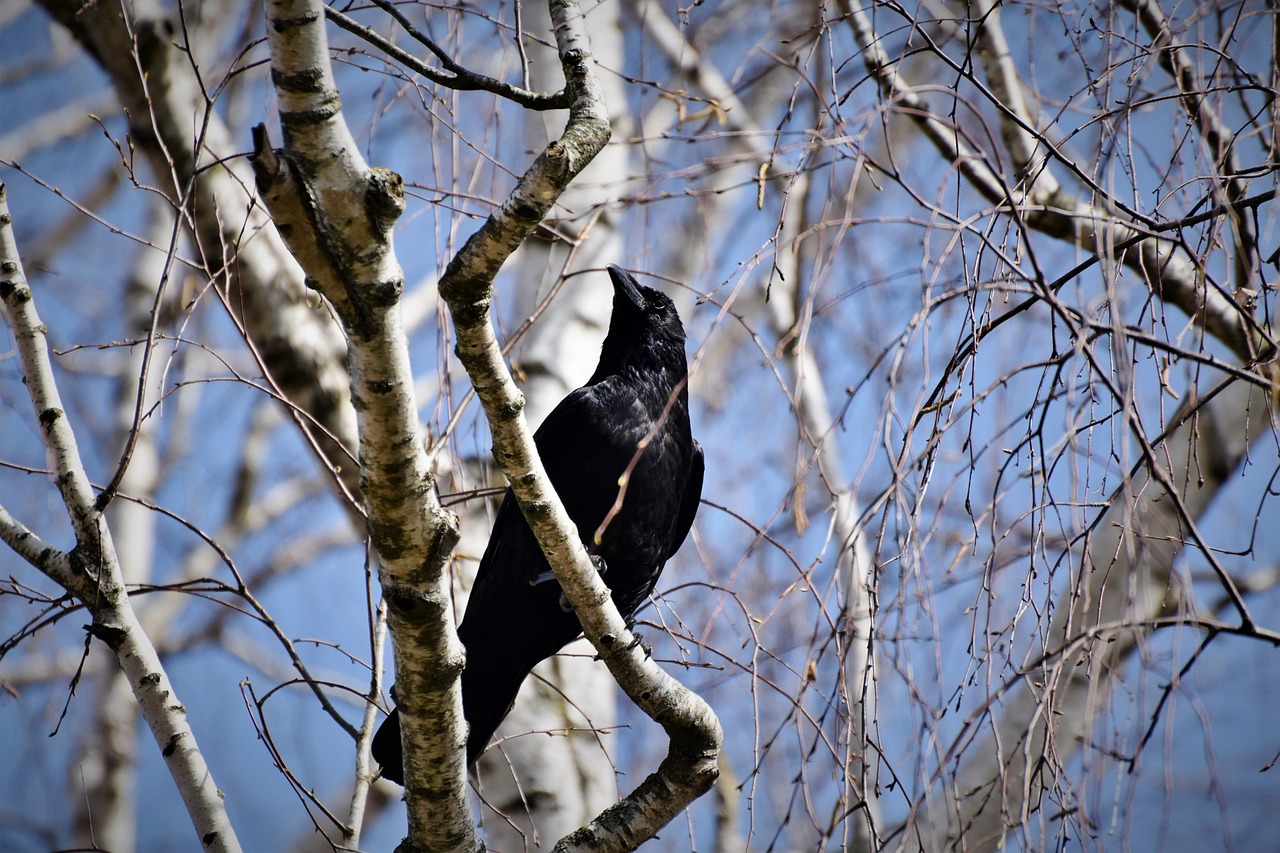
Weather Sensitivity
This article explores how the RQ-11B Raven drone has transformed ground operations in military and civilian contexts, enhancing reconnaissance, surveillance, and tactical decision-making capabilities.
The RQ-11B Raven is a small, portable unmanned aerial vehicle designed for tactical reconnaissance, providing real-time intelligence to ground forces and improving situational awareness on the battlefield.
The RQ-11B features advanced sensors, communication systems, and flight capabilities, enabling it to operate effectively in diverse environments and enhance the operational effectiveness of ground units.
Equipped with high-resolution cameras and thermal imaging, the Raven provides critical data for target identification and monitoring, significantly improving ground forces' ability to assess threats in real-time.
The Raven's ability to fly during both day and night enhances its utility, allowing ground units to maintain operational continuity and gather intelligence regardless of lighting conditions.
Real-time data transmission allows ground commanders to make informed decisions quickly, facilitating rapid responses to emerging threats and improving overall mission success rates.
The integration of the RQ-11B into ground operations offers numerous advantages, including increased situational awareness, reduced risk to personnel, and enhanced mission planning and execution.
Despite its many advantages, the RQ-11B faces challenges such as limited flight time, susceptibility to adverse weather conditions, and the need for skilled operators to maximize its potential.
The Raven's operational range is limited by its battery life, which can restrict mission scope and necessitate careful planning to ensure adequate coverage of operational areas.
Weather sensitivity is a crucial aspect that can significantly affect the performance of the RQ-11B Raven. This drone, while robust, is not impervious to the elements. For instance, high winds, heavy rain, or snow can compromise its flight stability and sensor functionality. When the weather turns unfavorable, the Raven's ability to gather and transmit vital information can be hindered, much like a ship struggling against turbulent seas. Ground forces must remain aware of these limitations when planning missions.
Moreover, certain weather conditions can lead to operational delays. For example, fog can obscure visibility, making it challenging for the Raven to perform its reconnaissance duties effectively. In such scenarios, ground units may need to adapt their strategies, potentially relying on alternative methods for intelligence gathering. This adaptability is akin to a chess player adjusting their strategy in response to an opponent's unexpected move.
To give you a clearer picture, here’s a brief overview of how different weather conditions can impact the Raven:
| Weather Condition | Impact on RQ-11B Raven |
|---|---|
| High Winds | Reduced flight stability and control |
| Heavy Rain | Potential sensor malfunction and reduced visibility |
| Snow | Weight increase and potential for ice accumulation |
| Fog | Obscured visibility, limiting reconnaissance capabilities |
In summary, while the RQ-11B Raven is a powerful tool for ground operations, its effectiveness can be significantly influenced by weather conditions. Ground forces must remain vigilant and flexible, ready to pivot their tactics in response to the unpredictable nature of the environment.
As technology evolves, future iterations of the RQ-11B Raven are expected to incorporate enhanced features, improving its capabilities and further solidifying its role in modern ground operations.
Future developments may focus on integrating the Raven with other unmanned systems and technologies, creating a more comprehensive surveillance and reconnaissance network for ground forces.
Improvements in autonomous flight capabilities could enable the RQ-11B to operate with greater independence, allowing it to perform complex missions without constant human oversight.
- What is the maximum flight time of the RQ-11B Raven? The RQ-11B typically has a flight time of about 60 to 90 minutes, depending on conditions.
- Can the Raven operate in adverse weather? While it can operate in light rain, heavy rain, snow, and high winds can significantly affect its performance.
- How is data transmitted from the Raven to ground forces? The Raven uses real-time data transmission systems to relay information back to ground commanders.
- What type of missions can the RQ-11B Raven perform? It is primarily used for reconnaissance, surveillance, and intelligence gathering in both military and civilian contexts.
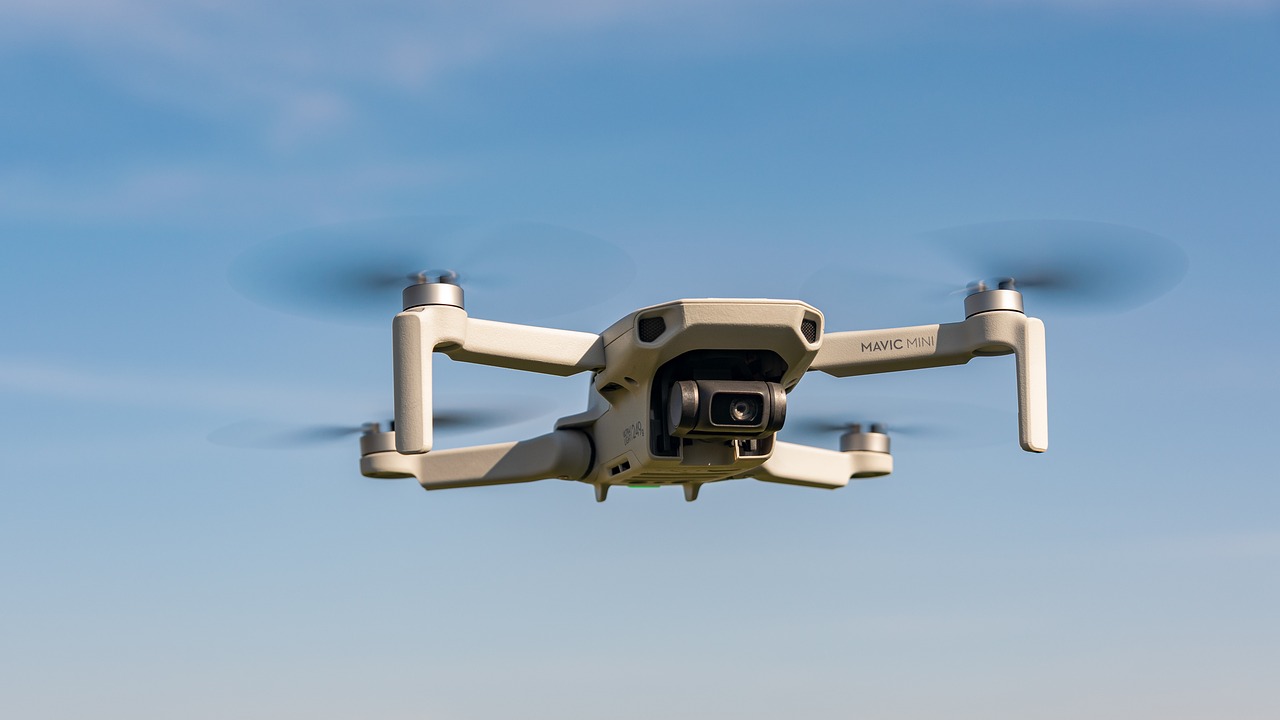
Future Developments and Innovations
The future of the RQ-11B Raven is not just about maintaining its current capabilities; it’s about pushing the boundaries of what unmanned aerial vehicles (UAVs) can achieve in ground operations. As technology advances at a breakneck speed, we can expect several revolutionary developments that will enhance the Raven's functionality and effectiveness in the field. Imagine a future where the Raven is not just a tool for surveillance, but a fully integrated component of a larger tactical ecosystem.
One of the most exciting prospects is the integration with other systems. Future iterations of the Raven could work seamlessly with other UAVs, ground robots, and even manned aircraft. This integration would create a comprehensive surveillance and reconnaissance network, allowing ground forces to gather data from multiple sources in real-time. For instance, a squadron of Ravens could coordinate their flights to cover a larger area while simultaneously relaying information back to a command center, enhancing situational awareness and decision-making capabilities.
Moreover, advancements in autonomy features will revolutionize the way the Raven operates. Imagine a Raven that can autonomously navigate complex environments, avoiding obstacles and dynamically adjusting its flight path based on real-time data. This would not only reduce the burden on operators but also enable the Raven to undertake more complex missions with minimal human intervention. Such capabilities could be particularly beneficial in high-risk situations where human presence is limited or dangerous.
In addition to these technological advancements, we can also anticipate improvements in the Raven's payload capacity. Future versions may be designed to carry more sophisticated sensors, such as multi-spectral imaging systems or advanced communication equipment. This would allow the Raven to perform a wider array of missions, from intelligence gathering to electronic warfare, thereby making it an even more versatile asset on the battlefield.
Furthermore, as the demand for data analytics grows, integrating artificial intelligence (AI) into the Raven's operation could provide a game-changing advantage. AI could analyze the data collected in real-time, identifying patterns and potential threats much faster than a human operator could. This capability would not only speed up the decision-making process but also enhance the accuracy of threat assessments, ultimately leading to more successful missions.
To summarize, the future developments and innovations surrounding the RQ-11B Raven are poised to transform it into a more powerful tool for ground operations. The combination of improved integration, advanced autonomy, enhanced payload capacity, and AI-driven analytics will ensure that the Raven remains at the forefront of military technology, ready to meet the challenges of modern warfare.
- What is the primary function of the RQ-11B Raven?
The RQ-11B Raven is designed primarily for tactical reconnaissance, providing real-time intelligence to ground forces. - How does the RQ-11B enhance situational awareness?
It offers high-resolution imagery and thermal imaging capabilities, allowing ground forces to assess threats effectively. - What are some limitations of the RQ-11B Raven?
Its flight duration is limited, and it can be affected by adverse weather conditions. - What future technologies might be integrated into the RQ-11B?
Future versions may include enhanced autonomy, greater payload capacity, and integration with other unmanned systems.
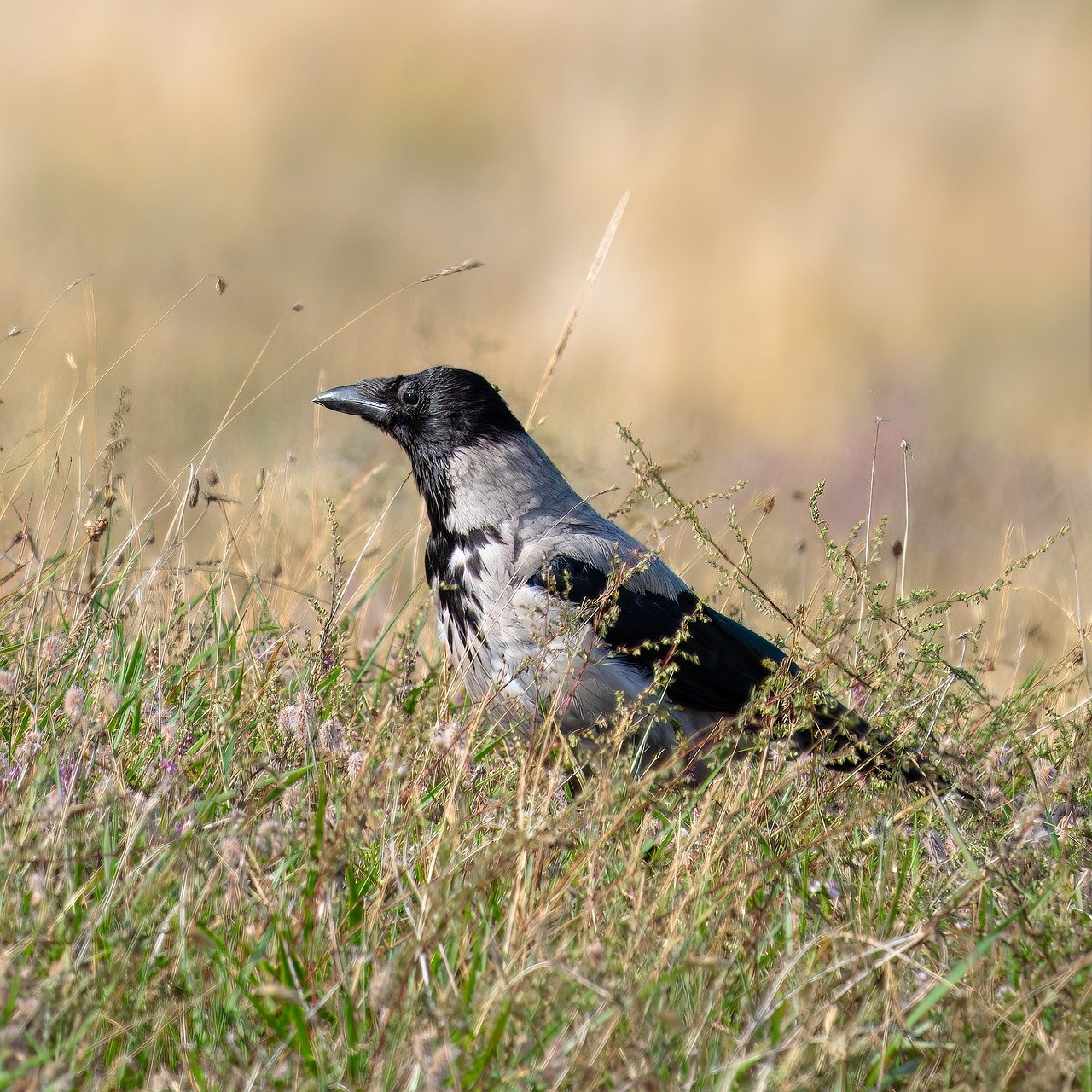
Integration with Other Systems
This article explores how the RQ-11B Raven drone has transformed ground operations in military and civilian contexts, enhancing reconnaissance, surveillance, and tactical decision-making capabilities.
The RQ-11B Raven is a small, portable unmanned aerial vehicle designed for tactical reconnaissance, providing real-time intelligence to ground forces and improving situational awareness on the battlefield.
The RQ-11B features advanced sensors, communication systems, and flight capabilities, enabling it to operate effectively in diverse environments and enhance the operational effectiveness of ground units.
Equipped with high-resolution cameras and thermal imaging, the Raven provides critical data for target identification and monitoring, significantly improving ground forces' ability to assess threats in real-time.
The Raven's ability to fly during both day and night enhances its utility, allowing ground units to maintain operational continuity and gather intelligence regardless of lighting conditions.
Real-time data transmission allows ground commanders to make informed decisions quickly, facilitating rapid responses to emerging threats and improving overall mission success rates.
The integration of the RQ-11B into ground operations offers numerous advantages, including increased situational awareness, reduced risk to personnel, and enhanced mission planning and execution.
Despite its many advantages, the RQ-11B faces challenges such as limited flight time, susceptibility to adverse weather conditions, and the need for skilled operators to maximize its potential.
The Raven's operational range is limited by its battery life, which can restrict mission scope and necessitate careful planning to ensure adequate coverage of operational areas.
Adverse weather conditions can impact the Raven's performance, limiting its effectiveness in certain environments and requiring ground forces to adapt their strategies accordingly.
As technology evolves, future iterations of the RQ-11B Raven are expected to incorporate enhanced features, improving its capabilities and further solidifying its role in modern ground operations.
The future of the RQ-11B Raven is not just about enhancing its standalone capabilities; it also lies in its . By connecting the Raven with other unmanned systems and advanced technologies, a comprehensive surveillance and reconnaissance network can be established. This interconnectedness will allow ground forces to operate with a higher degree of situational awareness, as they can share data seamlessly across platforms.
For instance, imagine a scenario where the Raven works in tandem with ground robots and satellite systems. The information gathered by the Raven could be relayed in real time to ground troops, allowing them to make tactical decisions based on a broader view of the battlefield. This synergy not only enhances operational efficiency but also significantly reduces the risk to personnel by providing them with critical information before they engage with potential threats.
Moreover, the integration with other systems can lead to the development of advanced algorithms that analyze data from multiple sources. This could include:
- Enhanced Targeting: By combining data from various sensors, ground forces can achieve a higher accuracy in target identification.
- Real-time Decision Making: Commanders can receive consolidated data from multiple platforms, enabling quicker and more informed decisions.
- Resource Optimization: Integrating the Raven with logistics systems can help in better allocation of resources based on real-time needs.
In conclusion, the integration of the RQ-11B Raven with other systems represents a significant leap forward in military technology, enabling ground forces to conduct operations with improved efficiency, safety, and effectiveness.
- What is the RQ-11B Raven? The RQ-11B Raven is a portable unmanned aerial vehicle designed primarily for tactical reconnaissance and surveillance operations.
- How does the Raven improve ground operations? It enhances situational awareness, provides real-time intelligence, and reduces risks to personnel during missions.
- What are the limitations of the RQ-11B Raven? Key limitations include battery life affecting flight duration and susceptibility to adverse weather conditions.
- What future developments are expected for the Raven? Future iterations may include advanced autonomy features and better integration with other unmanned systems.
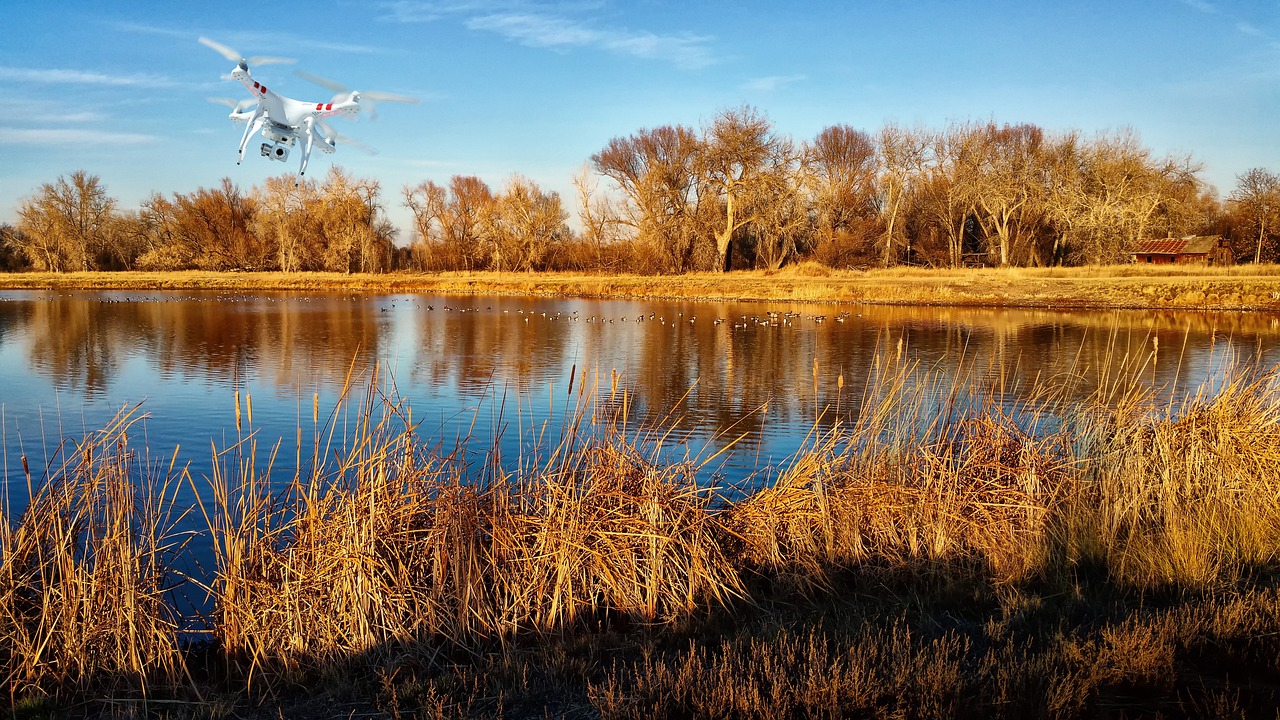
Advanced Autonomy Features
This article explores how the RQ-11B Raven drone has transformed ground operations in military and civilian contexts, enhancing reconnaissance, surveillance, and tactical decision-making capabilities.
The RQ-11B Raven is a small, portable unmanned aerial vehicle designed for tactical reconnaissance, providing real-time intelligence to ground forces and improving situational awareness on the battlefield.
The RQ-11B features advanced sensors, communication systems, and flight capabilities, enabling it to operate effectively in diverse environments and enhance the operational effectiveness of ground units.
Equipped with high-resolution cameras and thermal imaging, the Raven provides critical data for target identification and monitoring, significantly improving ground forces' ability to assess threats in real-time.
The Raven's ability to fly during both day and night enhances its utility, allowing ground units to maintain operational continuity and gather intelligence regardless of lighting conditions.
Real-time data transmission allows ground commanders to make informed decisions quickly, facilitating rapid responses to emerging threats and improving overall mission success rates.
The integration of the RQ-11B into ground operations offers numerous advantages, including increased situational awareness, reduced risk to personnel, and enhanced mission planning and execution.
Despite its many advantages, the RQ-11B faces challenges such as limited flight time, susceptibility to adverse weather conditions, and the need for skilled operators to maximize its potential.
The Raven's operational range is limited by its battery life, which can restrict mission scope and necessitate careful planning to ensure adequate coverage of operational areas.
Adverse weather conditions can impact the Raven's performance, limiting its effectiveness in certain environments and requiring ground forces to adapt their strategies accordingly.
As technology evolves, future iterations of the RQ-11B Raven are expected to incorporate enhanced features, improving its capabilities and further solidifying its role in modern ground operations.
One of the most exciting prospects for the RQ-11B Raven is its . Imagine a drone that can not only follow commands but also make decisions on its own! This level of autonomy could revolutionize how ground forces operate in complex environments. The integration of sophisticated algorithms and artificial intelligence allows the Raven to analyze its surroundings and adapt its flight path in real-time. For instance, if it detects an obstacle or a sudden change in the environment, it can autonomously reroute itself to avoid potential hazards.
Furthermore, the potential for mission planning automation is significant. The Raven could be programmed to execute specific missions without constant human oversight, allowing operators to focus on higher-level strategic decisions. This capability could be particularly beneficial in scenarios where rapid response is crucial. To illustrate, consider a situation where ground forces are under threat; an autonomous Raven could quickly gather intelligence and relay critical information back to command, all while navigating through challenging terrains.
In addition, the future RQ-11B models may incorporate swarming technology, enabling multiple Ravens to operate in coordination. This would enhance their effectiveness, allowing for a more extensive coverage area and more comprehensive data collection. The idea of several drones working together, like a flock of birds, can create a dynamic and adaptive surveillance network that is difficult for adversaries to counter.
As we look ahead, the potential for the RQ-11B Raven's autonomy features to evolve is thrilling. With advancements in machine learning and AI, the next generation of the Raven could operate with even greater independence, significantly enhancing the operational capabilities of ground forces.
- What is the RQ-11B Raven used for? The RQ-11B Raven is primarily used for tactical reconnaissance, providing real-time intelligence to ground forces.
- How does the Raven enhance situational awareness? The Raven utilizes advanced sensors and real-time data transmission to improve the situational awareness of ground units.
- What are the limitations of the RQ-11B Raven? Some limitations include flight duration constraints, sensitivity to weather conditions, and the need for skilled operators.
- What future developments are expected for the RQ-11B Raven? Future iterations may incorporate enhanced autonomy features and integration with other unmanned systems.
Frequently Asked Questions
- What is the RQ-11B Raven?
The RQ-11B Raven is a small, portable unmanned aerial vehicle (UAV) designed primarily for tactical reconnaissance. It provides real-time intelligence to ground forces, significantly enhancing their situational awareness on the battlefield.
- How does the RQ-11B Raven improve ground operations?
This drone enhances ground operations by offering advanced reconnaissance and surveillance capabilities. It allows military and civilian personnel to gather critical data, assess threats, and make informed decisions quickly, which is crucial for mission success.
- What are the key features of the RQ-11B Raven?
The Raven is equipped with high-resolution cameras, thermal imaging, and advanced communication systems. These features enable it to operate effectively in a variety of environments, providing valuable intelligence both day and night.
- Can the RQ-11B Raven operate in adverse weather conditions?
While the Raven is designed for versatility, its performance can be affected by adverse weather. Ground forces must adapt their strategies based on weather conditions to ensure effective operation.
- What are the limitations of the RQ-11B Raven?
Some limitations include its flight duration, which is restricted by battery life, and its reliance on skilled operators. These factors can impact mission planning and the overall effectiveness of ground operations.
- What future developments can we expect for the RQ-11B Raven?
Future iterations of the Raven are expected to incorporate advanced features, such as improved autonomy and integration with other unmanned systems. This will create a more comprehensive reconnaissance network for enhanced operational capabilities.
- How does the RQ-11B Raven enhance situational awareness?
The Raven provides real-time data and imagery, allowing ground commanders to assess their environment and make quick decisions. This capability significantly reduces risks to personnel and improves mission planning and execution.

